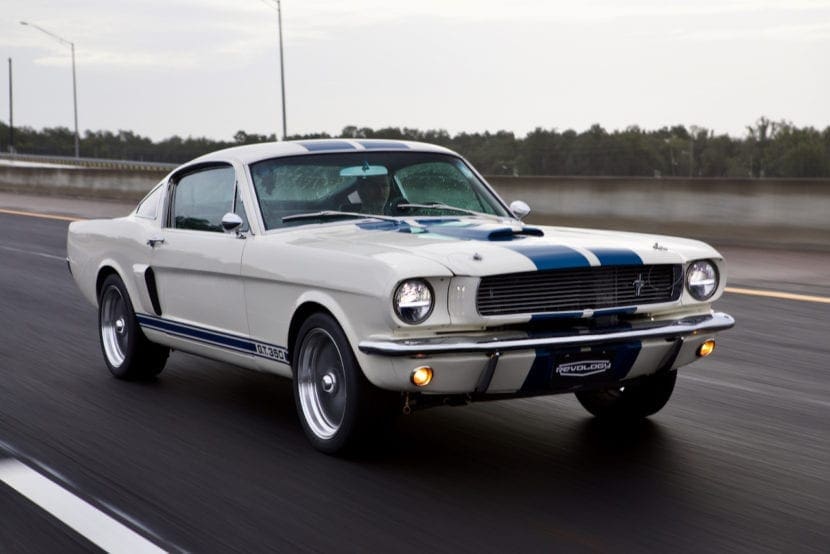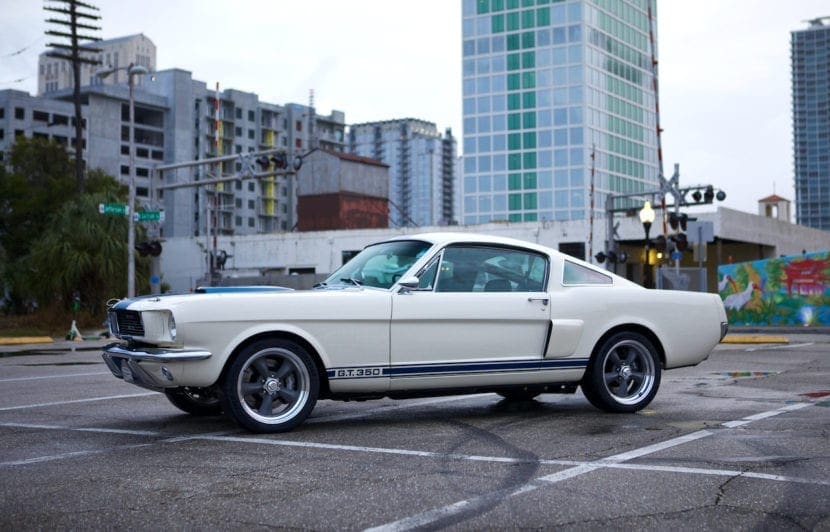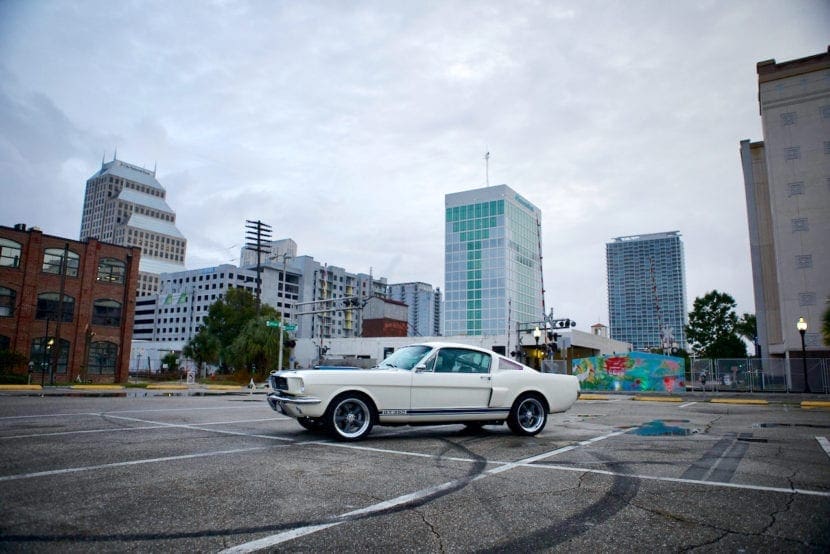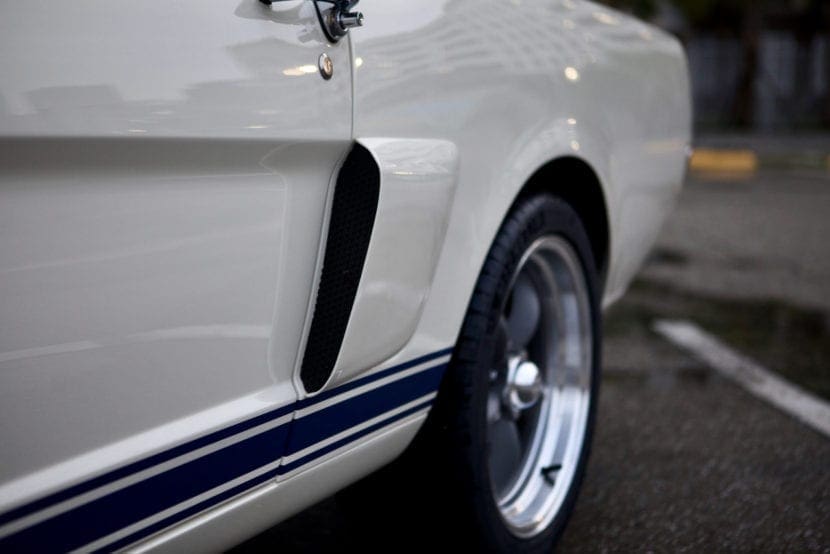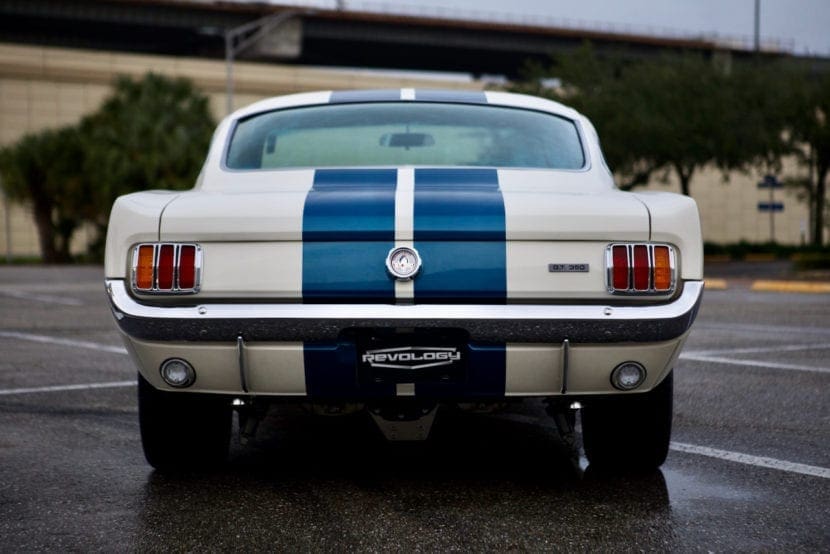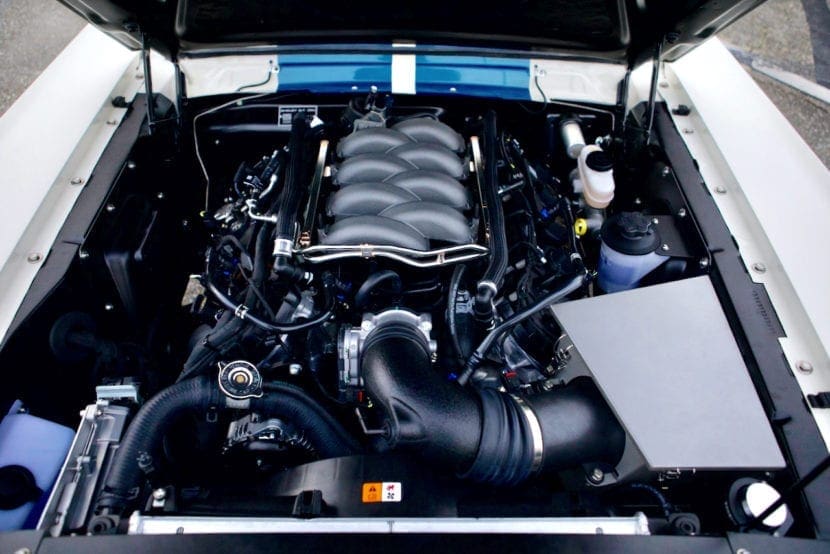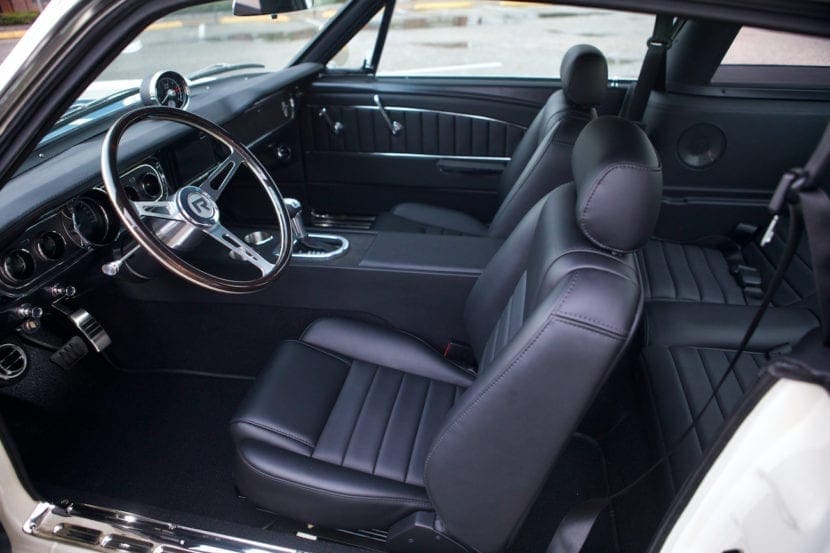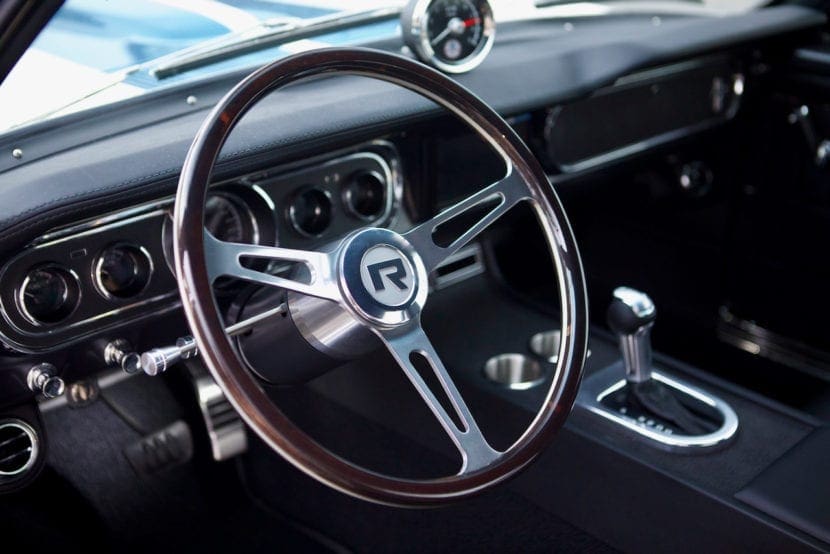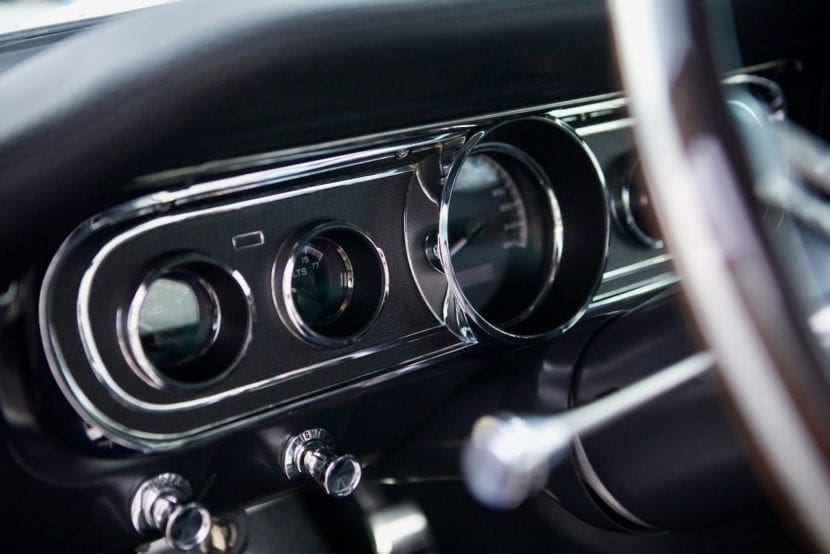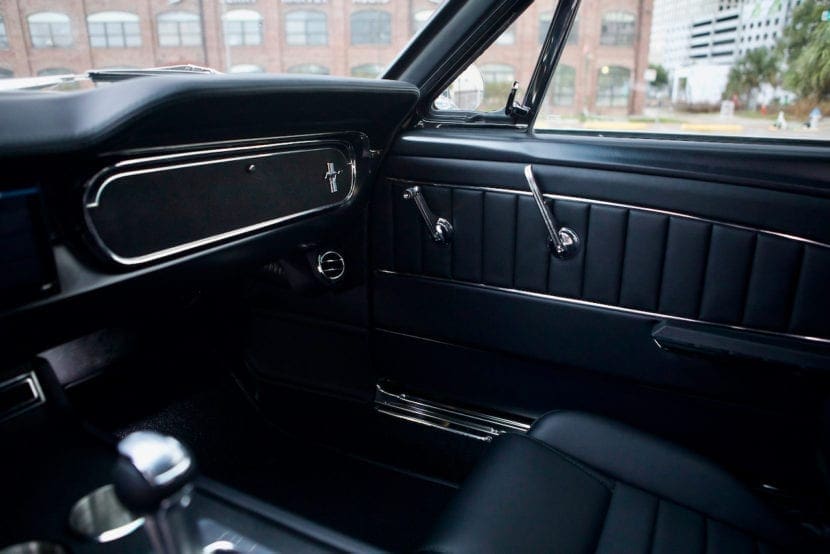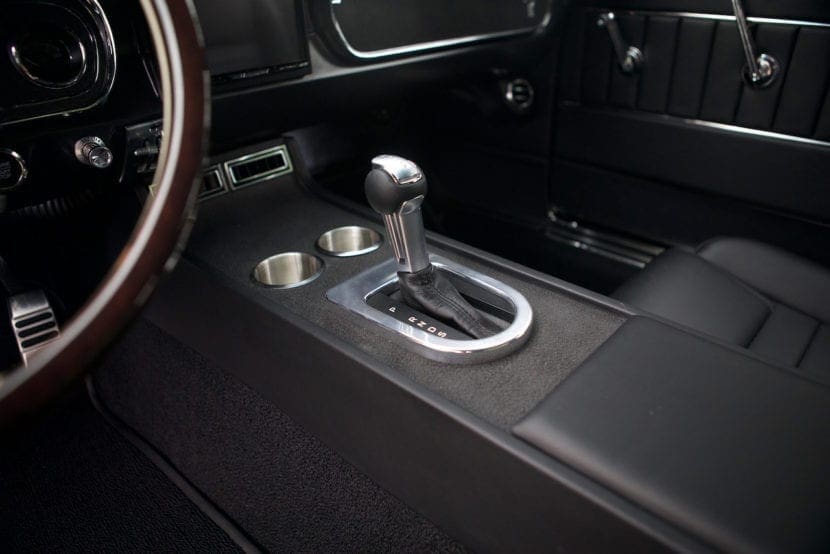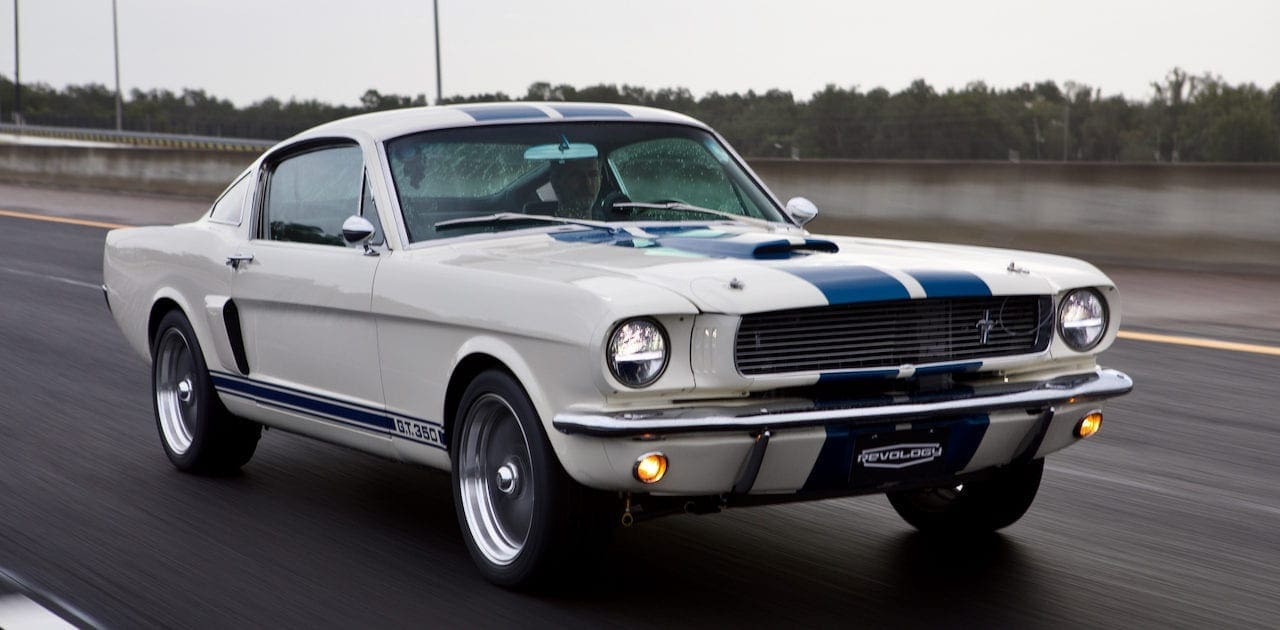

1966 Shelby GT350 | Car 70
Transcript +
Hi, I'm Tom Scarpello of Revology Cars, and this is car number 70 - a 1966 Shelby GT350 in Wimbledon White with Guardsman Blue LeMans stripes. So, this car is very significant for us because it is built with our very first fastback unibody. So earlier this year, we started production of the Mustang unibodies in-house. The primary reasons for doing it include better dimensional control and better weld integrity. For dimensional control, you have to consider that the original Mustang was a smash hit. Response to the car was several times greater than anything that Ford's forecasters had anticipated.
So, they really weren't prepared and had to really scramble to be able to build cars quickly enough to try to catch up with market demand. They were kind of rushed, and a lot of cars went out, maybe not complete, and there were issues that had to be corrected when they reached the dealership. The dimensional integrity of the vehicle was not anything like a modern vehicle. You have to have some amount of variability, but the variability that was acceptable back in the 1960s was much, much higher than what it is today.
That dimensional structure underneath the panels also has to be as close to ideal as possible, and the reason is that we're putting so much modern hardware into the car that we really need to maximize the available space. And we can't accept a wide variability and tolerances or things simply won't fit and then the benefit for the customer obviously, you get better fits, panel flushness, just the way that the car looks is better but also better functionality, things like wind noise.
The other aspect is weld integrity. Back in the ‘60s or even in a modern factory that builds steel unibodies, there are several hundred spot weld guns, and each of these guns is optimized for the specific welds that they perform, but when you're building unibodies in low volume production, that spot well gun has to do a lot of different operations, and that's pretty inefficient. So, we've invested in a very sophisticated modern spot-welding system that senses before it makes a weld. It senses the thickness of the metal and the metal composition, and it's able to generate a weld with the proper amount of current so that weld will be a good weld.
And this is equipment that didn't exist back in the ‘50s. It's equipment that isn't necessarily suitable for high-volume production, but for our purposes, it's ideal. That way, we can make absolutely certain that the weld integrity is exactly what it should be. And what you get in the end is you get an extremely stiff squeak and rattle-free body, and that's the ultimate objective!





